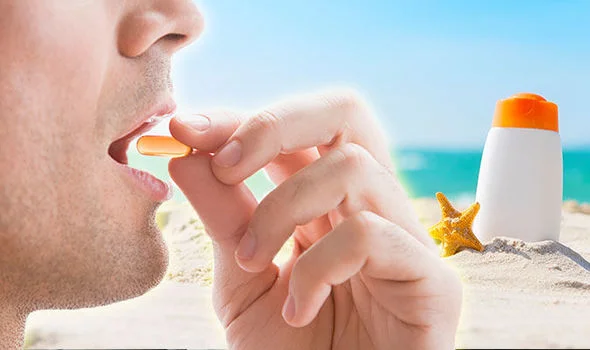
Does Sunscreen Block Vitamin D?
Sunscreen is one of the most important steps in protecting your skin from sun damage. However, many people wonder whether using sunscreen can block vitamin D production. Let’s explore this concern, understand how sunscreen works, and see if it affects your body’s ability to produce this essential nutrient.
How Does Sunscreen Work?
Sunscreen is designed to protect your skin by absorbing or reflecting ultraviolet (UV) rays from the sun. It typically contains ingredients that either act as a physical shield (like zinc oxide and titanium dioxide) or a chemical shield (like avobenzone or oxybenzone). By blocking UV rays, sunscreen prevents sunburn, premature aging, and lowers the risk of skin cancer.
The Link Between Sunlight and Vitamin D
Vitamin D is known as the “sunshine vitamin” because your skin produces it when exposed to UVB rays. This vitamin plays a vital role in keeping your bones strong, boosting your immune system, and supporting overall health. Naturally, people worry that sunscreen might interfere with this process by blocking UVB rays.
Does Sunscreen Really Block Vitamin D Production?
While sunscreen does reduce the amount of UVB rays reaching your skin, studies show that its impact on vitamin D production is minimal in real-world use. Here’s why:
- Incomplete Coverage: Most people don’t apply sunscreen as thoroughly or as frequently as recommended, leaving some skin exposed to UVB rays.
- Small Doses of Sunlight Are Enough: Even brief exposure to sunlight (about 10-30 minutes a few times a week) can help your body produce adequate vitamin D, depending on your skin tone and location.
- Natural Variations in UV Intensity: The strength of UV rays varies by time of day, season, and geographic location. You’re likely to get some UVB exposure even when using sunscreen.
Balancing Sun Protection and Vitamin D
You don’t need to choose between healthy skin and healthy bones. Here are some tips to maintain both:
- Get Sunlight Safely: Spend short periods in the sun without sunscreen during off-peak hours (early morning or late afternoon). Avoid prolonged exposure that could lead to sunburn.
- Consider Your Diet: Include vitamin D-rich foods like salmon, egg yolks, fortified milk, and mushrooms in your meals.
- Supplements: If you’re concerned about low vitamin D levels, consider taking a supplement after consulting your doctor.
- Regular Health Checks: Get your vitamin D levels tested during routine check-ups to ensure they’re within a healthy range.
Recommended Sunscreens for All-Day Protection
Here are some effective sunscreens that provide excellent protection without disrupting your skincare routine:
- La Roche-Posay Anthelios Melt-in Milk Sunscreen SPF 100: A lightweight, water-resistant formula with high protection.
- Neutrogena Hydro Boost Water Gel Lotion SPF 50: Hydrating and non-greasy, perfect for daily wear.
- EltaMD UV Clear Broad-Spectrum SPF 46: Ideal for sensitive or acne-prone skin.
- Blue Lizard Sensitive Mineral Sunscreen SPF 30: Contains zinc oxide for gentle, broad-spectrum protection.
- Supergoop! Unseen Sunscreen SPF 40: A clear, non-comedogenic option that works well under makeup.
Frequently Asked Questions On Does Sunscreen Block Vitamin D?
1. Can I skip sunscreen to boost my vitamin D levels?
No. Unprotected sun exposure increases your risk of skin damage and cancer. There are safer ways to maintain vitamin D levels.
2. How much sun exposure do I need for vitamin D?
Generally, 10-30 minutes of sunlight a few times a week is sufficient, depending on your skin tone and location.
3. Do darker skin tones need more sun for vitamin D production?
Yes. Melanin in darker skin reduces the skin’s ability to produce vitamin D, so longer sun exposure may be needed.
4. Can I get enough vitamin D from food alone?
While foods like salmon, egg yolks, and fortified milk provide vitamin D, most people need sunlight or supplements to meet their daily needs.
5. Does sunscreen completely block UV rays?
No. Even high-SPF sunscreens allow a small percentage of UV rays to reach the skin.
6. What are the signs of low vitamin D levels?
Symptoms include fatigue, muscle weakness, bone pain, and frequent infections. Consult a doctor for proper diagnosis.
7. Can I use tanning beds for vitamin D?
No. Tanning beds emit harmful UV rays that significantly increase your risk of skin cancer without offering safe vitamin D benefits.
8. Are there specific sunscreens for vitamin D-sensitive individuals?
Any broad-spectrum sunscreen is safe to use. Focus on maintaining vitamin D through diet or supplements instead of skipping sunscreen.
9. Is morning sunlight better for vitamin D?
Yes. Early morning sunlight has lower UV intensity, reducing the risk of skin damage while still supporting vitamin D production.
10. Can children use the same sunscreen as adults?
Yes, but choose a gentle, fragrance-free sunscreen formulated for sensitive skin, especially for young children.
Conclusion
Sunscreen is essential for protecting your skin from harmful UV rays, and its impact on vitamin D production is minimal when used correctly. By balancing sun protection with safe sun exposure, a healthy diet, and regular supplements if needed, you can maintain optimal vitamin D levels without compromising your skin health. Remember, your skin and overall health deserve equal care!

Leave a Reply